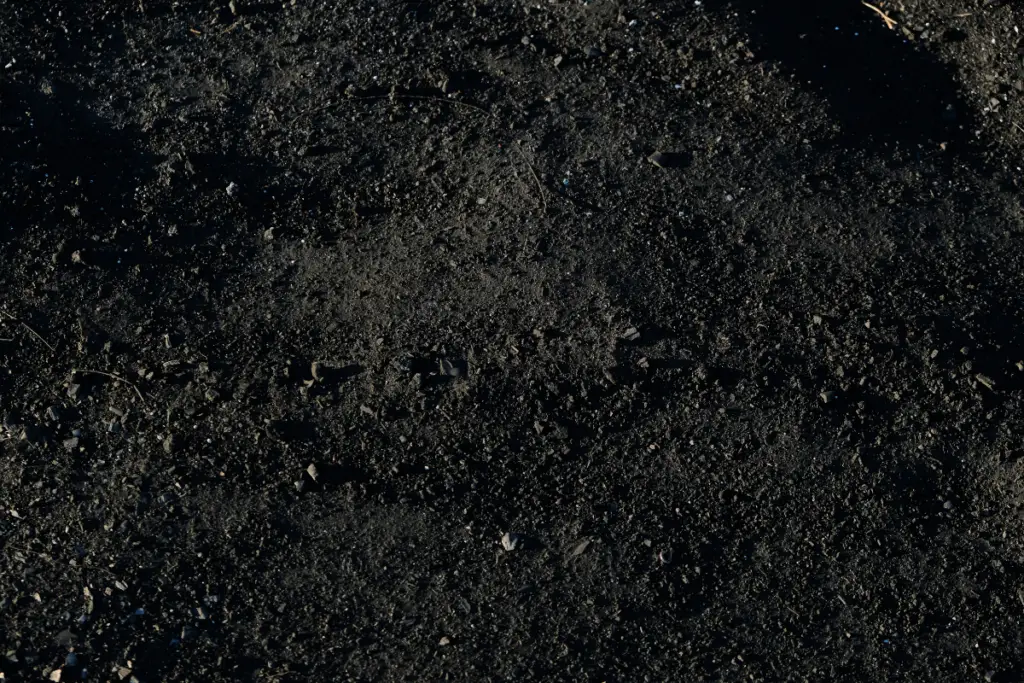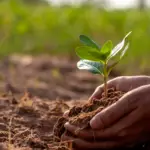Black cotton soil is a type of clayey soil that is commonly found in tropical and subtropical regions.
It is known for its unique characteristics, including high moisture retention, natural soil aeration, and reduced erosion.
However, it also has some disadvantages, such as swelling and shrinking, slow drainage, and difficult tillage.
Due to its properties, black cotton soil is suitable for growing cotton and other crops.
It is also used as a foundation for construction projects, although its swelling and shrinking properties can pose challenges.
As a result, it is important to design the foundation properly and use appropriate stabilization techniques to avoid common problems.
Understanding the properties and foundation types for black cotton soil is crucial for those involved in agriculture and construction.
This article will explore the characteristics, chemical composition, and types of black cotton soil, as well as its advantages and disadvantages.
It will also provide guidance on how to design the foundation on black cotton soil and how to avoid common problems.

Table of Contents
Characteristics of Black Cotton Soil
Black cotton soil is a unique type of soil with distinct physical and chemical properties that make it different from other types of soil.
This soil is also known as regur soil and is mainly found in the tropics and subtropics region.
In this section, we will explore the physical and chemical properties of black cotton soil.
Physical Properties
Black cotton soil is characterized by its high clay content, which makes it highly absorbent. The clay content of this soil is above 50%, which gives it the name “black cotton soil.”
During the rainy season, this soil swells due to its high clay content, and in summer, it cracks due to shrinkage.
The swelling and cracking of this soil can cause significant damage to buildings and other structures.
The physical properties of black cotton soil are affected by its moisture content. When the soil is wet, it becomes sticky and difficult to work with.
When it is dry, it becomes hard and compact, making it difficult to till. The texture of this soil is fine, and it is easy to mold into various shapes.
Chemical Properties
Black cotton soil is rich in calcium, carbonate, potash, lime, iron, and magnesium, but it contains a low amount of phosphorus, nitrogen, and organic matter.
This soil is more fertile in low lands than on uplands due to its high moisture retention capacity.
The high moisture retention capacity of this soil makes it suitable for agriculture, but it can also cause problems for construction.
The chemical properties of black cotton soil affect its ability to support structures. The soil’s high moisture content can cause it to expand, which can lead to the failure of foundations and other structures.
The soil’s low nutrient content can also make it difficult to grow crops without the addition of fertilizers.
Formation of Black Cotton Soil
Black cotton soil, also known as regur soil, is a type of soil that is widely distributed worldwide, particularly in parts of Australia, India, and Africa.
The formation of black cotton soil is a complex process that involves various factors such as climate, parent rock, and vegetation.
The parent rock of black cotton soil is typically basalt or shale. These rocks break down over time, releasing tiny mineral particles into the mix.
The climate also plays a crucial role in the formation of black cotton soil. The high temperatures and low rainfall in the tropics and subtropics region cause the rocks to weather faster, leading to the formation of black cotton soil.
Vegetation also plays a role in the formation of black cotton soil.
The roots of plants help to break down the parent rock, and the decaying plant material adds organic matter to the soil.
This organic matter helps to improve the soil’s structure and fertility.
The high clay content (above 50%) and dark color give black cotton soil its name. The clay particles in black cotton soil are very fine, making the soil highly cohesive and plastic when wet.
This property makes it challenging to work with during construction, as it can cause foundation problems and affect the stability of buildings.
- The all purpose organic potting soil that fits all your needs; convenience, quality tested organic ingredients and a proven track record of performance
Prices pulled from the Amazon Product Advertising API on:
Product prices and availability are accurate as of the date/time indicated and are subject to change. Any price and availability information displayed on [relevant Amazon Site(s), as applicable] at the time of purchase will apply to the purchase of this product.
Distribution and Locations
Black cotton soil, also known as regur soil, is a type of soil that is found in various parts of the world.
The total area covered by black cotton soil is approximately 250 million hectares, with more than 80% of the total area located in Australia, India, Sudan, Chad, and Ethiopia.
In India, black cotton soil is found in the states of Madhya Pradesh and Karnataka.
It is also present in the northern territory of New South Wales, South Australia, Tasmania, and the coastal areas of Northern Territories in Australia.
Black soil distribution strongly correlates with native prairie ecosystems, including other grassland ecosystems with a continental climate.
It is also found in steppe and forest-steppe landscapes in Russia, Ukraine, and Northern Kazakhstan, as well as in the Great Plains of the United States.
The following table summarizes the estimated black soil coverage in some countries:
| Country | Estimated Black Soil Coverage |
|---|---|
| Russia and Ukraine | 230 million hectares |
| United States | Not specified |
| Kazakhstan | Not specified |
| Australia | 200 million hectares |
| India | Not specified |
Black cotton soil is mainly found with a thickness of less than 30cm, but it can also be found in depths of more than 1m in low lands.
Deep black soil is very fertile and is suitable for crops such as rice, cotton, sugarcane, and citrus fruits.
Importance in Agriculture
Black cotton soil plays a vital role in agriculture, supporting the growth of crops that feed nations.
The soil type is highly favorable for the cultivation of cotton due to its high moisture retention capacity.
However, it is also suitable for growing other crops such as wheat, sorghum, and maize.
Crop Suitability
Black cotton soil is known for its high fertility, which makes it suitable for growing a wide range of crops.
The soil is rich in nutrients such as nitrogen, phosphorus, and potassium, which are essential for plant growth.
It also has a good water-holding capacity, which helps to maintain soil moisture levels during dry spells.
However, the soil’s swelling and shrinking behavior can make it challenging to grow certain crops.
For instance, the soil’s tendency to shrink during dry spells can cause the soil to crack, making it difficult for crops to grow.
On the other hand, during the rainy season, the soil swells, which can cause plants to drown.
Irrigation Requirements
Black cotton soil has slow drainage, which makes it prone to waterlogging. Therefore, it is essential to manage irrigation carefully to avoid waterlogging, which can lead to crop failure.
Farmers can use techniques such as raised bed planting, contour farming, and mulching to improve water drainage and prevent soil erosion.
Challenges with Black Cotton Soil
Black cotton soil is a type of expansive soil that poses several challenges in construction and agriculture.
It is a clay-rich soil that is highly plastic and prone to shrink and swell properties.
In this section, we will discuss the two main challenges of black cotton soil: shrink and swell properties and erosion issues.
Shrink and Swell Properties
One of the most significant challenges of black cotton soil is its shrink and swell properties.
Black cotton soil has a high clay content, which makes it highly plastic and prone to significant volume changes due to moisture variations.
When the soil is dry, it shrinks and cracks, which can lead to structural damage to buildings and roads. When the soil is wet, it swells, which can lead to uplift and heave in structures.
To mitigate the effects of shrink and swell properties, engineers and architects often use techniques such as soil stabilization, moisture control, and foundation design.
Soil stabilization involves adding materials to the soil to improve its strength, reduce its plasticity, and increase its resistance to moisture variations.
Moisture control involves designing drainage systems to prevent water from accumulating in the soil.
Foundation design involves designing structures with foundations that can accommodate the soil’s volume changes.
Erosion Issues
Another challenge of black cotton soil is its susceptibility to erosion. Black cotton soil has a low shear strength and is prone to erosion by wind and water.
When the soil erodes, it can lead to soil loss, reduced fertility, and decreased crop yields.
To prevent erosion, farmers and engineers often use techniques such as contour farming, mulching, and terracing.
Contour farming involves planting crops across the slope of the land to reduce water runoff.
Mulching involves covering the soil with organic material to reduce erosion by wind and water.
Terracing involves building retaining walls to prevent soil from washing away.
Management and Improvement Techniques
Soil Amendments
Black cotton soil is known to have poor stability and high expansiveness. Therefore, it requires specific soil amendments to improve its properties.
One of the most popular soil amendments is lime. Lime helps to reduce the soil’s acidity, which in turn improves the soil’s structure and fertility.
Gypsum is another soil amendment that can be used to improve the soil’s physical properties. It helps to reduce the soil’s plasticity and swelling potential.
Other soil amendments that can be used to improve black cotton soil include organic matter, such as compost and manure.
Organic matter helps to improve soil structure, water-holding capacity, and nutrient availability.
In addition, adding sand to the soil can help to improve its drainage and aeration.
Crop Rotation Practices
Crop rotation is an essential practice for managing black cotton soil. It helps to improve soil fertility and reduce soil erosion.
Crop rotation involves planting different crops in a particular field in a specific sequence. For example, planting legumes such as beans and peas can help to fix nitrogen in the soil, which is essential for plant growth.
Another crop rotation practice is intercropping. Intercropping involves planting two or more crops in the same field simultaneously. For example, planting maize and beans together can help to reduce soil erosion and improve soil fertility.
Conclusion
In conclusion, black cotton soil is a unique type of soil that is found in certain regions of the world.
It is characterized by its high clay content, deep black color, and ability to expand and contract with changes in moisture levels.
Black cotton soil can be both a blessing and a curse for farmers and gardeners.
On the one hand, its high water-holding capacity and ability to retain nutrients make it a fertile soil for growing crops.
On the other hand, its tendency to crack and become hard during dry periods can make it difficult to cultivate.
Understanding the characteristics of black cotton soil is essential for those who want to work with this soil type.
Proper soil management techniques such as adding organic matter and adjusting irrigation methods can help to improve soil structure and make it more suitable for plant growth.
- How to Dry Basil Leaves: A Professional Guide
- Is an Avocado a Fruit or Vegetable? Simple Answer and Explanation
- Does Pineapple Have Seeds? Exploring the Anatomy of Pineapples
- Blooming Through Winter: Can I Grow Vegetables Indoors in the Winter?
- What Can You Grow in a Greenhouse All Year Round: A Guide to Year-Round Greenhouse Gardening
- Are Blueberries Blue? Debunking the Myth of Their Color

















